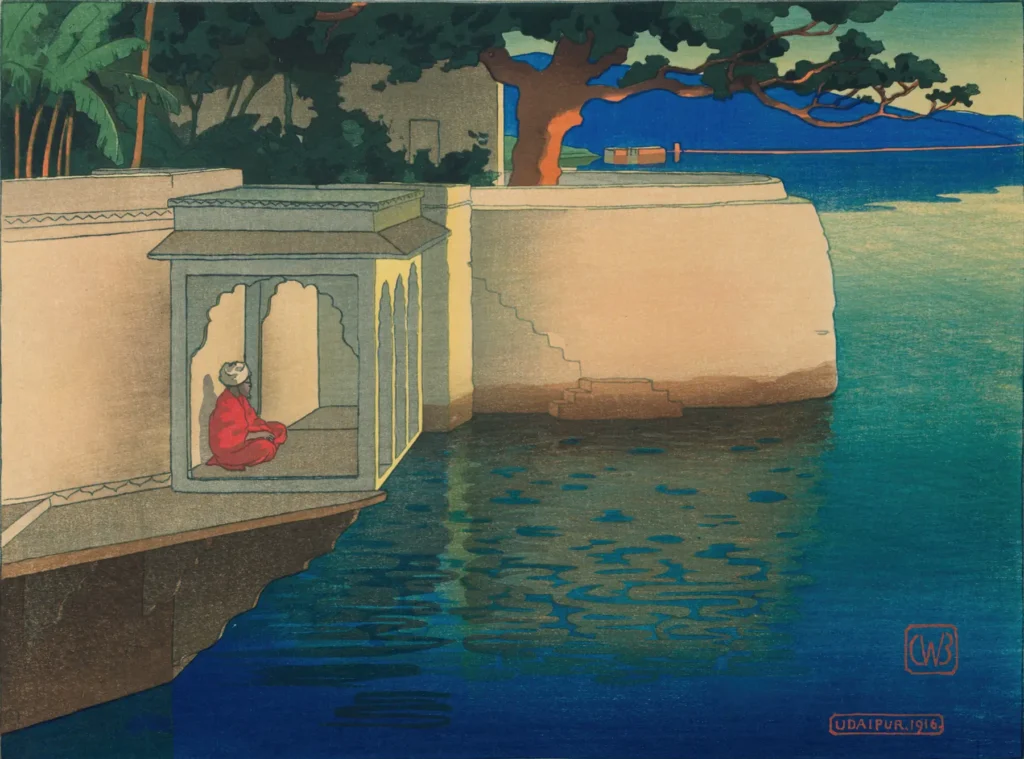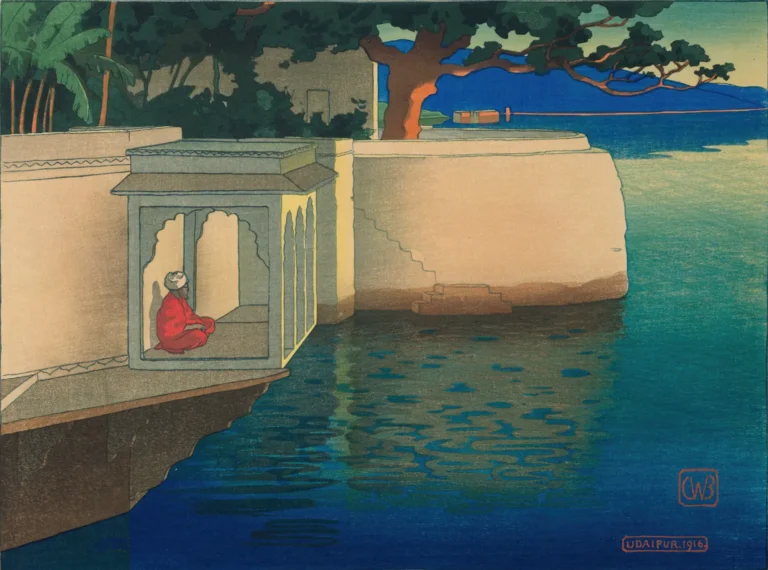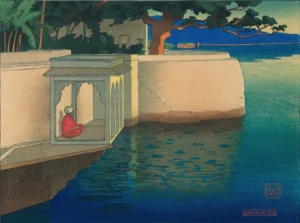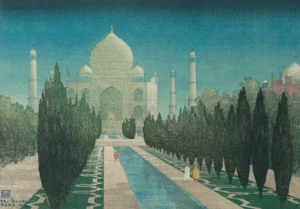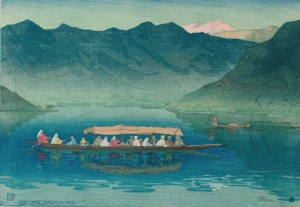Udaipur I (1916)
Created by English artist Charles William Bartlett in 1916, 'Udaipur' is a splendid woodblock print that reflects the beauty and intricacies of the ukiyo-e style. During a five-year tour across Asia, Bartlett immersed himself in diverse cultures, which profoundly influenced his work. This print, published in 1917, stands as a testament to the successful blending of Western artistic traditions with the refined techniques of Japanese printmaking. Now part of the Honolulu Museum of Art's collection, 'Udaipur' continues to be celebrated for its historical and artistic significance.
Year 1916
About the Artwork
Did You Know
Liked what you see? Add it to your collection.
Enjoyed reading? Share it.
... continued
Artist and Background
Charles William Bartlett was born in 1860 in Bridport, Dorset, England. He was a renowned painter and printmaker who trained at the Royal Academy of Arts in London and later studied in Paris under artists such as Gustave Boulanger and Jules-Joseph Lefebvre.
Creation and Publication
The woodblock print "Udaipur (1916)" was designed in 1916 and published in 1917. During this period, Bartlett was on a five-year tour of Asia, which began in 1913 and included travels through China and Japan. In Japan, he met the publisher Shozaburo Watanabe, who was instrumental in introducing Bartlett to the traditional Japanese ukiyo-e method of colour woodblock printmaking.
Style and Technique
The print is part of a series that Bartlett created using the ukiyo-e technique, which involves the sequential superimposition of multiple blocks. This method was characteristic of the Sousaku-hanga (creative prints) movement in Japan, which emphasized original designs and collaborative production involving the designer, block carver, and printer.
Collection and Display
"Udaipur (1916)" is part of a collection held by the Honolulu Museum of Art (formerly known as the Honolulu Academy of Arts). The print was published in Japan by Watanabe Shōzaburō in 1917 and has been featured in various exhibitions, including one at the gallery of the Berlin Photographic Company in New York.
Public Domain Status
The print is in the public domain due to the expiration of its copyright. According to Japanese Copyright Law and U.S. public domain rules, the work is no longer under copyright as it was published more than 50 years after the death of the creator.




